As the sun shines bright, solar technology has the potential to revolutionize sustainable agriculture. From powering irrigation systems to running equipment, solar energy offers multifaceted solutions. By harnessing the sun’s energy, farmers can reduce reliance on fossil fuels, cutting emissions and costs. Solar panels on farm rooftops or ground-mounted arrays optimize land use while generating clean power. Additionally, solar-powered sensors and drones enable precise monitoring and management of crops, enhancing efficiency.
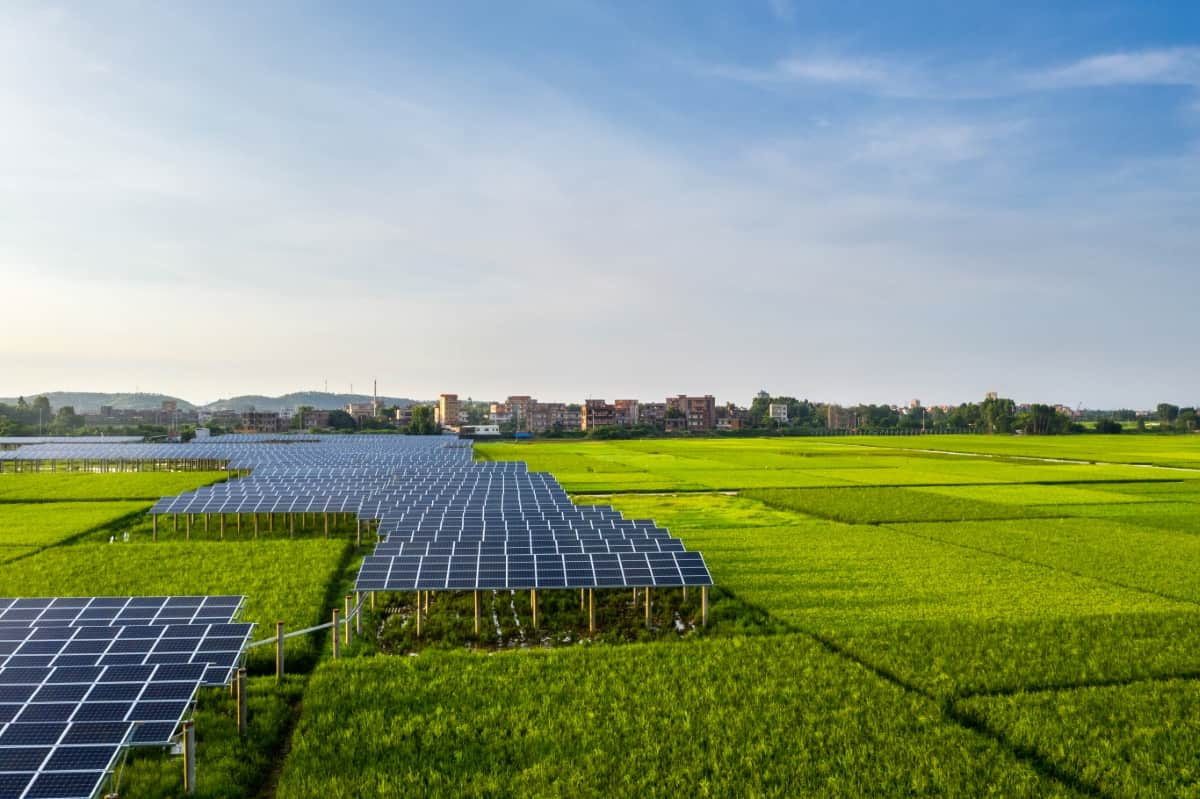
What is Solar Technology?
There is growing recognition that solar technology is crucial in promoting sustainable agricultural practices. By leveraging the sun’s energy, solar panels can supply a diverse range of agricultural operations with a sustainable energy source, eliminating the necessity for fossil fuels. In the long term, this transition not only mitigates carbon emissions but also provides a more economically viable alternative. The foundation of solar technology is an understanding of its components and operations.
Photovoltaic cells, or solar panels, directly transform sunlight into electricity. This energy can power certain machinery, greenhouse heating, and irrigation systems. For instance, solar-powered irrigation systems can increase crop yields while decreasing water consumption by as much as 30%. Moreover, solar energy is used to power farm illumination and electric fencing, thereby increasing productivity and enhancing security.
How Solar Technology is Powering Sustainable Agriculture
Solar technology is revolutionizing the agricultural sector by providing sustainable and cost-effective solutions for various farming operations. One of the most significant advancements is solar-powered irrigation systems, which utilize solar panels to power pumps that deliver water directly to crops, reducing water wastage and energy costs. Photovoltaic panels, commonly installed on farm buildings, convert sunlight into electricity to power farm operations, leading to reduced reliance on traditional energy sources.
Greenhouses are also benefiting from solar energy, with innovative heating systems that harness the sun’s warmth to maintain optimal growing conditions year-round. Pest management has seen a green transformation with solar-powered solutions that deter pests without the use of harmful chemicals. Livestock welfare is not left behind; solar water pumps ensure a constant supply of fresh water, which is vital for animal health.
Remote farms, often cut off from the grid, find a reliable ally in off-grid solar systems, which provide essential electricity for daily tasks. Crop drying, a critical post-harvest process, is made more efficient with solar dehydrators that use the sun’s heat to remove moisture from produce. Monitoring and surveillance have also gone solar, with systems powered by the sun keeping a watchful eye on-farm activities.
Solar lighting extends farm working hours and illuminates outbuildings without adding to the electricity bill. Precision agriculture, which relies on accurate data for crop management, integrates seamlessly with solar power to create a smart farming environment. Solar heating also benefits barns and livestock shelters, ensuring animals are comfortable even in colder months.
In case you missed it: How to Water Your Garden with Solar Power: For Home Gardening, Greenhouse, Polyhouse, and Outdoor
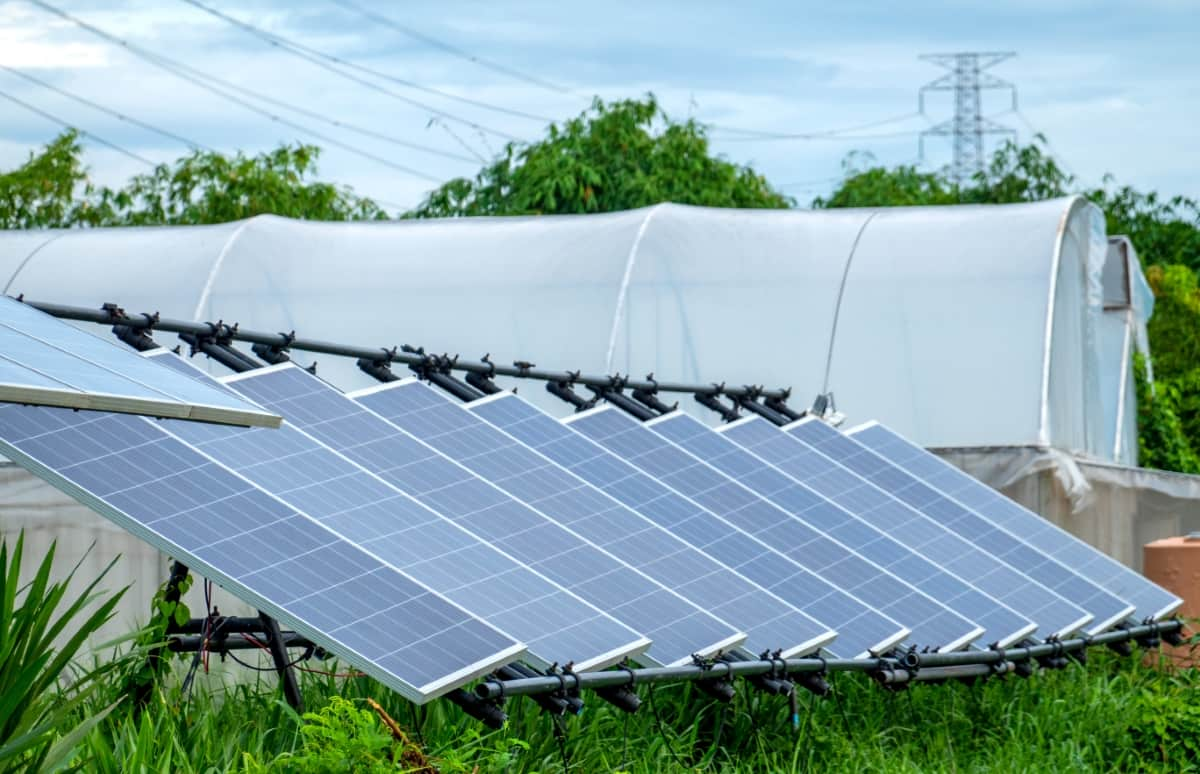
Portable solar generators have become invaluable for fieldwork, providing power where it’s needed most. Solar refrigeration offers a sustainable way to store produce, maintaining freshness while saving energy. Aquaculture systems are not left out; they use solar energy to regulate water temperatures and support healthy aquatic ecosystems.
15 Ways to Use Solar Technology in Agriculture
Solar-Powered Irrigation Systems
Solar-powered irrigation technology has been gaining interest worldwide, with governments promoting strategies to advance renewable energy solutions, including solar energy. In the agricultural sector, solar-powered irrigation can be particularly successful in overcoming energy shortages that disrupt the supply needed for lifting and distributing irrigation water. This technology represents a reliable, cost-effective, and environmentally sustainable solution to reduce farmers’ vulnerability to energy shortages that hamper production capacity.
The adoption of solar technology in agriculture is rapidly expanding, with a framework developed to inform sustainable and inclusive solar irrigation. This framework addresses the missing links between energy, water, and food security, aiming to make solar irrigation socially and financially accessible. The development of off-grid solar photovoltaic irrigation is motivated by the aspiration to ensure water accessibility for the purpose of augmenting food production, diminishing energy costs and carbon emissions derived from fossil fuels, and bolstering human resilience to the impacts of climate change.
Solar-powered irrigation systems provide a cost-effective solution to traditional irrigation methods, allowing for a more efficient way to conserve water on farmland. These systems are designed to be adaptable to existing water systems and incorporate wireless communication technology for easy operations. They are controllable via an Android app enabled with a Bluetooth network.
Photovoltaic Panels for Farm Operations
Agrivoltaics, defined as agriculture located underneath or between rows of solar panels, offers the opportunity to harvest the sun twice, potentially benefiting farmers, rural communities, and the solar industry. Department of Energy Solar Energy Technologies is researching the opportunities and trade-offs of agrivoltaics to answer questions that farmers may have about this practice. Benefits to farmers and landowners include preserving agricultural land and farm ownership for future generations and additional revenue through land lease payments or other financial agreements.
Solar Energy for Greenhouse Heating
In greenhouses, passive solar design principles optimize heat absorption and reduce heat loss. By utilizing solar panels which generate electricity for the purpose of powering electric equipment within the greenhouse, including fans, pumps, and lighting, an energy-efficient and sustainable solar-powered greenhouse is achieved. By incorporating solar panels, an energy-efficient greenhouse can potentially operate off-grid or generate an equivalent quantity of energy for its operations as it consumes.
Solar-Powered Pest Management Solutions
Solar technology can also be utilized for pest management solutions in agriculture. While specific search results were not provided for this topic, solar-powered pest management solutions can include the use of solar-powered devices for pest control, such as traps, deterrents, or electronic repellents. These solutions can contribute to sustainable agriculture by reducing the reliance on chemical pesticides and promoting environmentally friendly pest management practices.
In case you missed it: Solar Power Fencing for Crop Protection, Design, Installation, and Advantages
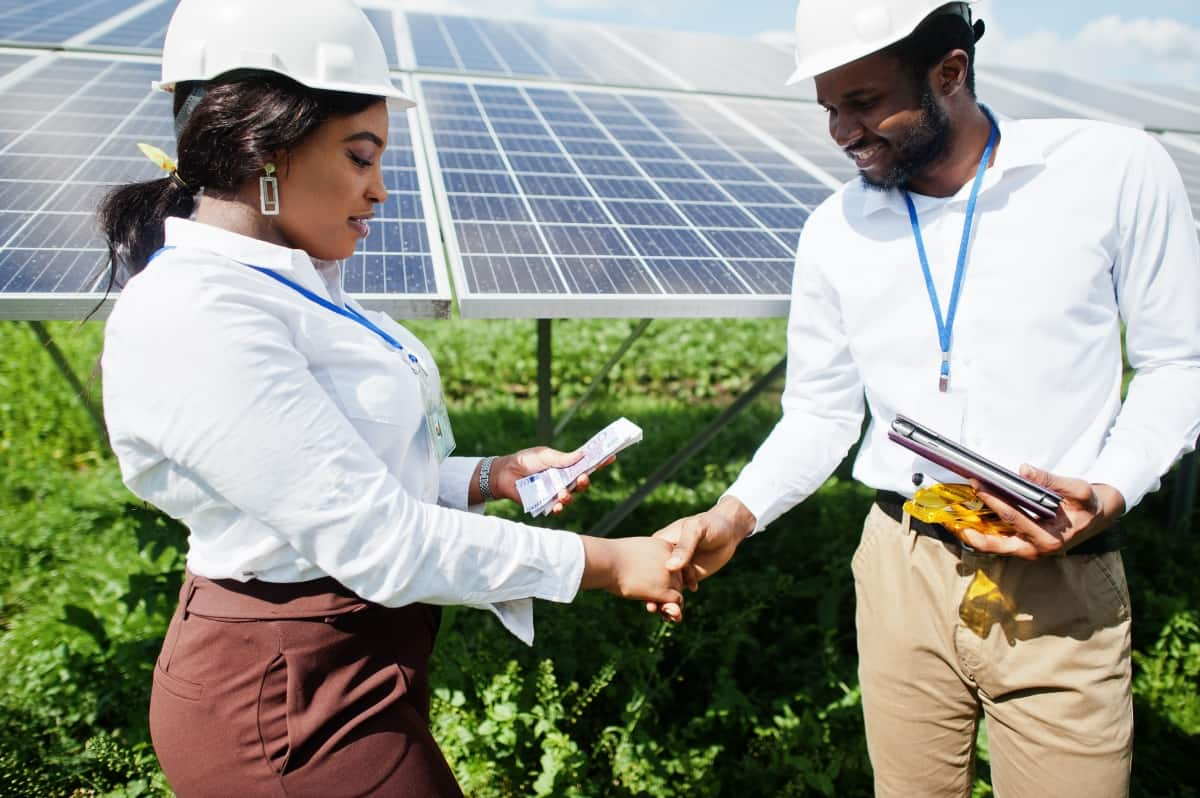
Solar Water Pumps for Livestock
Water pumps that are fueled by solar energy are powered by either photovoltaic (PV) panels or the thermal energy radiated from the sun. They present a more cost-effective and ecologically sustainable substitute for water pumps powered by utility electricity or diesel. These pumps are useful where grid electricity is unavailable or impractical and alternative sources need to provide sufficient energy. In Kenya, private companies have started developing the market for solar water pumps, with systems often sponsored by international donors to secure drinking and livestock water supply.
Off-Grid Solar Systems for Remote Farms
Solar energy systems that operate off-grid are indispensable for remote plantations that lack access to conventional power sources. These systems offer diverse agricultural operations a dependable and environmentally friendly energy source, decreasing reliance on utility electricity and diesel generators. These devices enhance the resilience and self-reliance of remote farms by guaranteeing uninterrupted electricity for critical operations.
Solar Dehydrators for Crop Drying
Solar dehydrators extend the expiration life of crops and maintain their quality by utilizing solar energy. These systems provide a viable and ecologically conscious alternative to conventional fuel-powered drying techniques, diminishing dependence on such methods and promoting sustainable agricultural methods.
Solar-Powered Monitoring and Surveillance
Solar-powered monitoring and surveillance systems can be used in agriculture for various purposes, such as monitoring crop growth, detecting pest infestations, and ensuring the security of agricultural assets. These systems utilize solar energy to power cameras, sensors, and other monitoring devices, providing farmers with valuable insights and enhancing the overall efficiency and security of agricultural operations.
Solar Lighting for Farms and Outbuildings
Solar lighting systems are widely used in farms and outbuildings to provide illumination for various activities during the night. These systems offer a sustainable and cost-effective alternative to traditional grid-powered lighting, contributing to energy efficiency and reducing operational costs for agricultural facilities.
Integration of Solar Power with Precision Agriculture
Precision agriculture involves using advanced technologies to optimize crop yields and resource efficiency. Integrating solar power with precision agriculture allows for the sustainable and efficient deployment of solar technology to enhance agricultural productivity, reduce environmental impact, and improve resource management.
In case you missed it: Solar Powered Hydroponics – A Full Guide
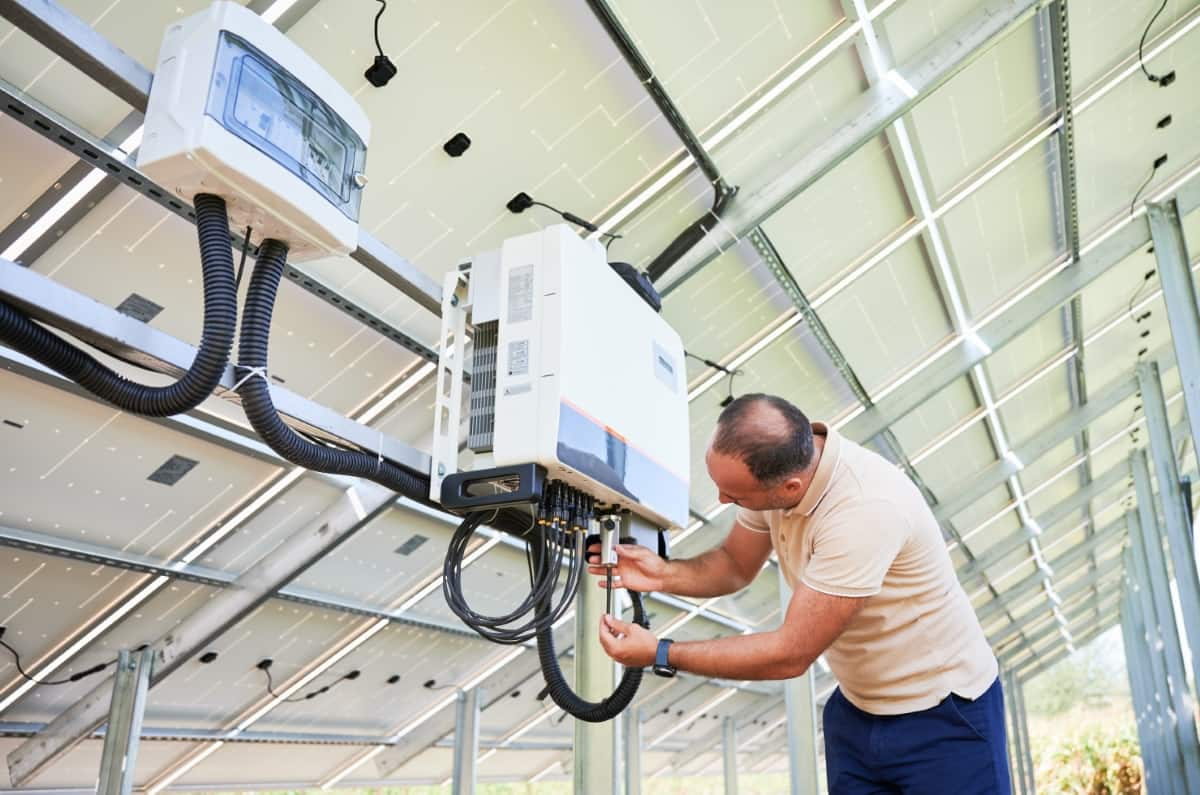
Solar-heated Barns and Livestock Shelters
Solar-heated barns and livestock shelters use solar energy to heat animal housing facilities. These systems offer a sustainable, environmentally friendly solution for maintaining comfortable and healthy living conditions for livestock, especially during colder seasons. By harnessing solar energy for heating, farmers can reduce their reliance on traditional heating fuels, contributing to cost savings and environmental sustainability.
Portable Solar Generators for Fieldwork
Portable solar generators are valuable assets for agricultural fieldwork. They provide a convenient and sustainable source of power for various equipment and tools. These generators offer flexibility and mobility, allowing farmers to access reliable power in remote locations without the need for traditional fuel-powered generators. Thus, they contribute to a more sustainable and environmentally friendly approach to agricultural operations.
Solar Refrigeration for Produce Storage
Solar refrigeration systems offer a sustainable solution for storing produce by utilizing solar energy to power refrigeration units. These systems provide reliable and environmentally friendly cold storage solutions for agricultural products, reducing dependence on grid electricity and traditional fuel-based refrigeration methods. Solar refrigeration contributes to preserving produce’s quality and shelf life while minimizing the environmental impact of storage operations.
Solar Energy in Aquaculture Systems
Solar energy is increasingly being integrated into aquaculture systems to power various operations, including aeration, water circulation, and temperature control. By harnessing solar power, aquaculture facilities can reduce their reliance on grid electricity and diesel generators, leading to cost savings and environmental benefits. Solar energy contributes to sustainable and efficient aquaculture practices, supporting the growth and health of aquatic species while minimizing aquaculture operations’ environmental footprint.
In case you missed it: Solar Drip Irrigation System Benefits, Model
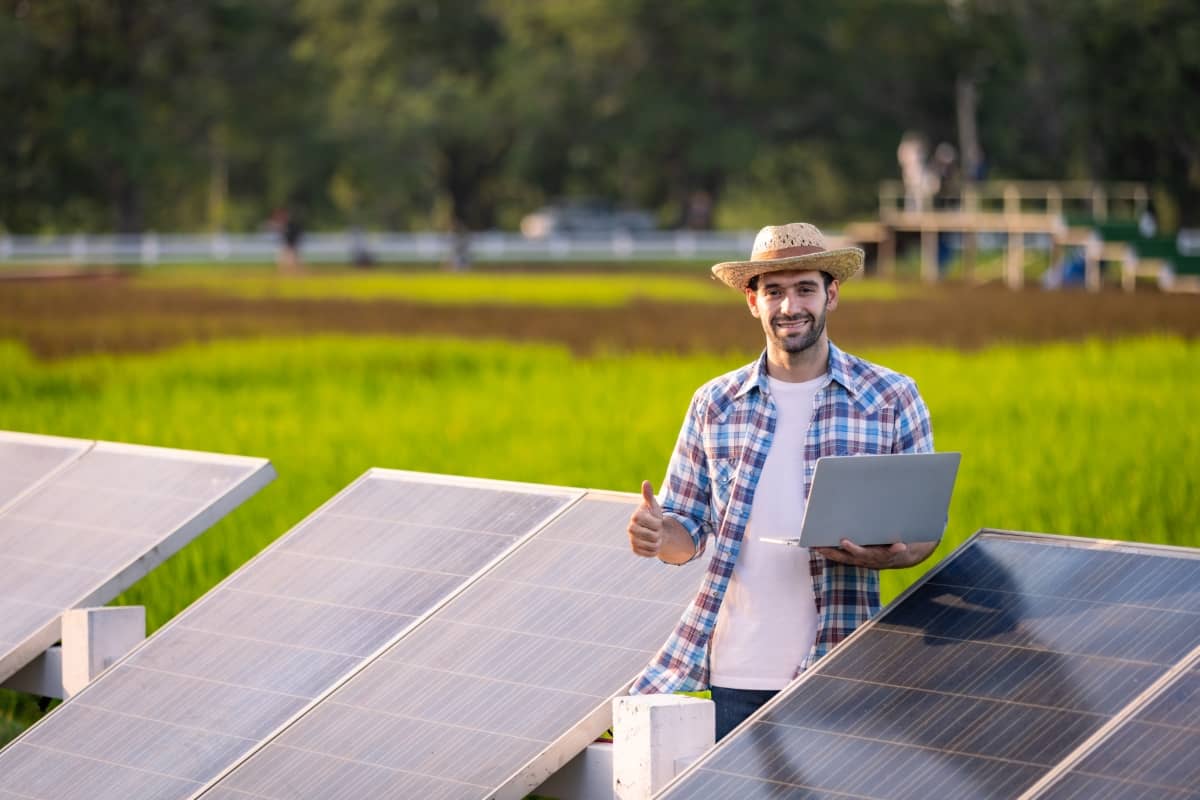
Financing and Incentives for Solar Adoption in Agriculture
Various financing options and incentives promote renewable energy integration and support the adoption of solar technology in agriculture. Governments, international organizations, and financial institutions offer grants, subsidies, and financing programs to support farmers and agricultural businesses in implementing solar solutions. These incentives help reduce the financial barriers associated with solar adoption, making it more accessible and economically viable for agricultural stakeholders.
Applications of Solar Energy in Agriculture
Solar water pumping systems stand out as a cornerstone application, providing an energy-efficient solution for irrigating crops in areas lacking access to conventional grid electricity. By harnessing sunlight to power pumps, farmers can draw water from different sources such as wells, rivers, or lakes, ensuring consistent irrigation even in remote or arid regions. This technology reduces reliance on fossil fuels and minimizes operational costs and environmental impact.
Another innovative application is integrating photovoltaic panels into greenhouse structures, enabling the creation of solar-powered greenhouses. These structures utilize solar energy for heating, cooling, and lighting, optimizing growing conditions throughout the year. By extending the growing season and reducing energy expenses, solar-powered greenhouses promote food security while mitigating climate-related risks.
Solar drying technology offers a sustainable solution for preserving agricultural produce, particularly in regions with limited access to traditional drying methods. Solar dryers utilize the sun’s energy to remove moisture from fruits, vegetables, and other crops, thereby preserving their nutritional value and extending shelf life. This approach reduces post-harvest losses and enhances the economic viability of smallholder farmers, contributing to food security and rural development.
Solar power adoption in agriculture yields significant economic and environmental benefits. Reduced energy costs, enhanced energy independence, and potential revenue from surplus energy generation bolster farming operations’ financial sustainability. Furthermore, the environmental advantages, including reduced carbon emissions, water conservation, and ecosystem preservation, align with global sustainability goals.
In case you missed it: Solar System for Agricultural Water Pumps
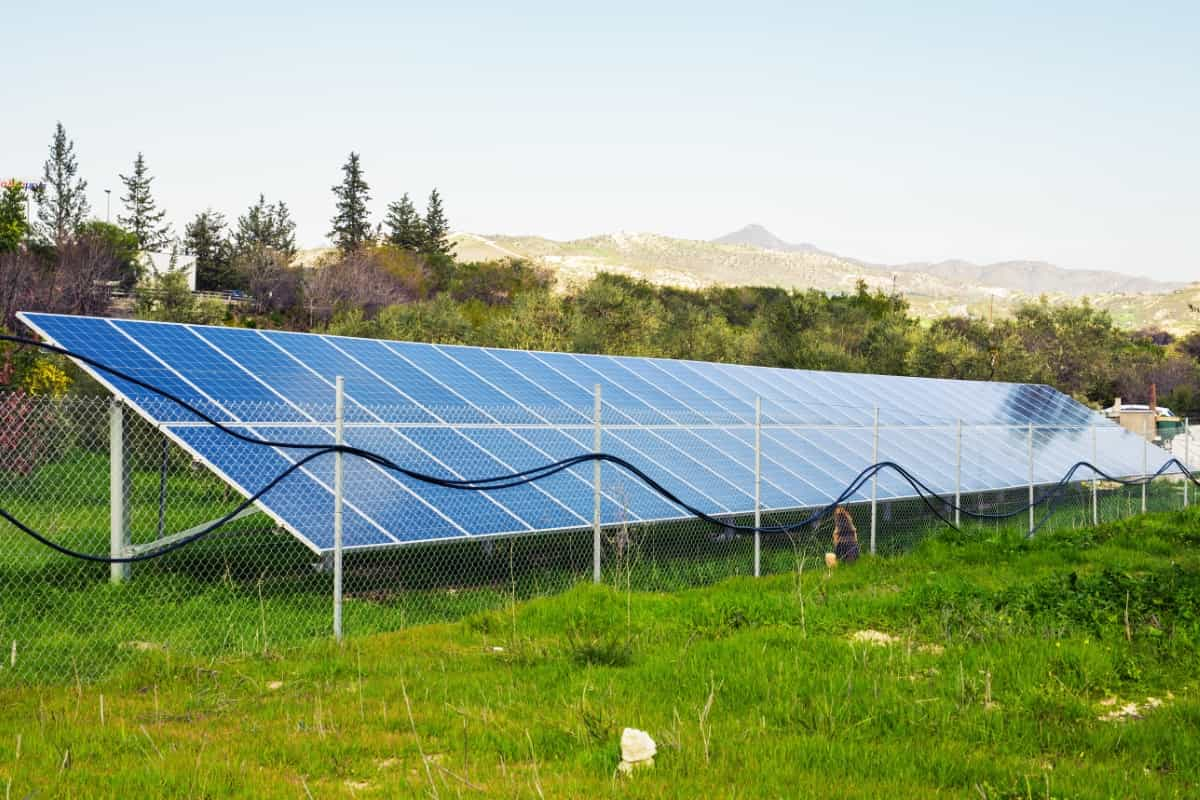
Despite these benefits, challenges such as high initial investment costs and technological complexity persist. However, ongoing advancements in solar technology, coupled with supportive policies and financing mechanisms, are gradually addressing these barriers. Innovations such as floating solar farms and agrivoltaics hold promise for optimizing land use and further revolutionizing the agricultural landscape.
Conclusion
The integration of solar technology in agriculture presents a promising path towards sustainability. By leveraging solar power for irrigation, equipment, and monitoring systems, farmers can reduce their carbon footprint while increasing efficiency and productivity. This shift towards renewable energy benefits the environment and strengthens farming practices’ resilience, ensuring a brighter and more sustainable future for generations to come.
- Types of Pesticides Used in Agriculture: A Beginner’s Guide
- Economical Aquaculture: A Guide to Low-Budget Fish Farming
- 15 Common Planting Errors That Can Doom Your Fruit Trees
- How to Make Houseplants Bushy: Effective Tips and Ideas
- Innovative Strategies for Boosting Coconut Pollination and Yield
- Pollination Strategies for Maximum Pumpkin Yield
- The Complete Guide to Chicken Fattening: Strategies for Maximum Growth
- Natural Solutions for Tulip Problems: 100% Effective Remedies for Leaf and Bulb-Related Issues
- Revolutionizing Citrus Preservation: Towards a Healthier, Greener Future
- Natural Solutions for Peony Leaf and Flower Problems: 100% Effective Remedies
- Maximizing Profits with Avocado Contract Farming in India: A Comprehensive Guide
- Natural Solutions for Hydrangea Problems: 100% Effective Remedies for Leaf and Flowers
- The Ultimate Guide to Choosing the Perfect Foliage Friend: Bringing Life Indoors
- From Sunlight to Sustainability: 15 Ways to Use Solar Technology in Agriculture
- The Ultimate Guide to Dong Tao Chicken: Exploring from History to Raising
- The Eco-Friendly Makeover: How to Convert Your Unused Swimming Pool into a Fish Pond
- Mastering the Art of Delaware Chicken Farming: Essentials for Healthy Backyard Flocks
- 20 Best Homemade Fertilizers for Money Plant: DIY Recipes and Application Methods
- How to Craft a Comprehensive Free-Range Chicken Farming Business Plan
- Brighten Your Flock: Raising Easter Egger Chickens for Beauty and Bounty
- How to Optimize Your Poultry Egg Farm Business Plan with These Strategies
- Subsidy for Spirulina Cultivation: How Indian Government Schemes Encouraging Spirulina Farmers
- Ultimate Guide to Raising Dominique Chickens: Breeding, Feeding, Egg-Production, and Care
- Mastering the Art of Raising Jersey Giant Chickens: Care, Feeding, and More
- Ultimate Guide to Raising Legbar Chickens: Breeding, Farming Practices, Diet, Egg-Production
- How to Raise Welsummer Chickens: A Comprehensive Guide for Beginners
- How to Protect Indoor Plants in Winter: A Comprehensive Guide
- Ultimate Guide to Grow Bag Gardening: Tips, Tricks, and Planting Ideas for Urban Gardeners
- Guide to Lotus Cultivation: How to Propagate, Plant, Grow, Care, Cost, and Profit
- Agriculture Drone Subsidy Scheme: Government Kisan Subsidy, License, and How to Apply Online
- Ultimate Guide to Raising Araucana Chickens: Breed Profile, Farming Economics, Diet, and Care
- Bringing Hydroponics to Classroom: Importance, Benefits of Learning for School Students
- Ultimate Guide to Raising Polish Chickens: Breed Profile, Farming Economics, Diet, and Care
- Ultimate Guide to Raising Australorp Chickens: Profile, Farming Economics, Egg Production, Diet, and Care
- Silkie Chicken Farming: Raising Practices, Varieties, Egg Production, Diet, and Care
- Sussex Chicken Farming: Raising Practices, Varieties, Egg Production, Diet and Care